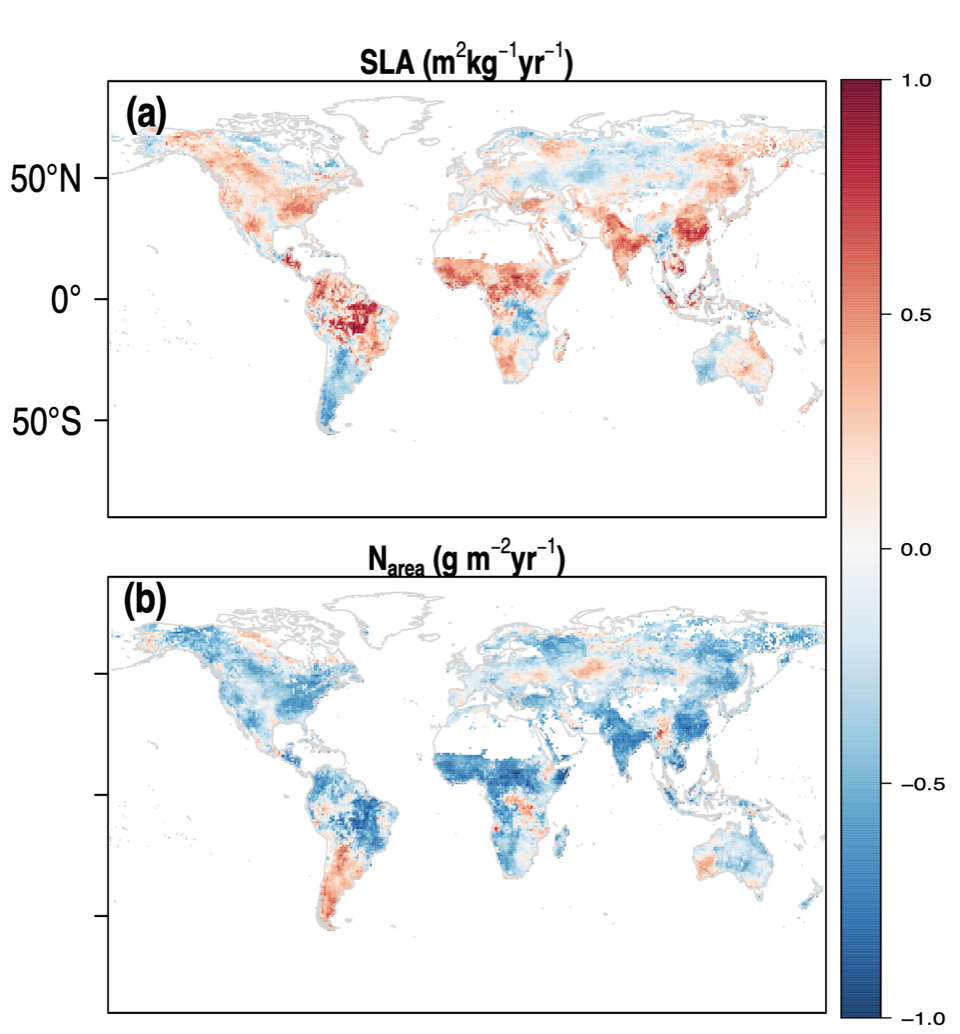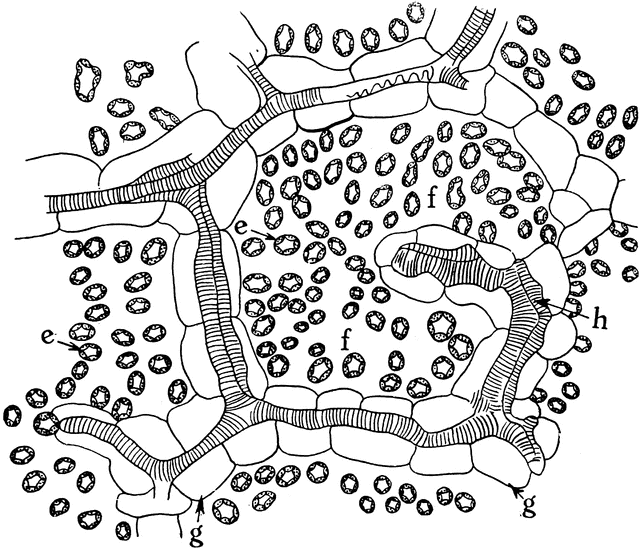
Why Do Leaves Have Such Different Shapes? Leaf collage, Leaf projects, Plants
The close tie between leaf form and function is an area of high current activity (Leishman et al., 2007), again with a focus on leaf structure, but also in terms of functional components - leaf photosynthesis, nitrogen and phosphorus. When applied to invasive plants, the approach clearly identified that exotic invasive species modified function to enable faster growth than native invasive.

Figure 1 from A common developmental program can produce diverse leaf shapes Semantic Scholar
There are two basic forms of leaves that can be described considering the way the blade (or lamina) is divided. Leaves may be simple or compound. Figure 30.9.1 30.9. 1: Simple and compound leaves: Leaves may be simple or compound. In simple leaves, the lamina is continuous. (a) The banana plant ( Musa sp.) has simple leaves.

Arthur Dove, 191112, Based on Leaf Forms and Spaces, pastel on unidentified support. Now lost
Based on Leaf Forms and Spaces #ARTI401410. Ask a question. Total Price: $99.00. Painting Price: $99.00 Frame Price: $0.00. Select Size Gallery Price Artisoo Price. Custom Size Order is Easy: 1. Select the size that is the closest to your required size from the size & pricing list. 2. Enter your required size into the comment box at checkout.

Developing polymer compositebased leaf spring systems for automotive industry
Here we provide the 'Global Spectrum of Plant Form and Function Dataset', containing species mean values for six vascular plant traits. Together, these traits -plant height, stem specific.

Figure 1 from Learningbased Leaf Cell Instance Segmentation Semantic Scholar
How do leaf air spaces form? In plants, air spaces can form by cell separation or cell death. Air space formation by cell death is known as lysogeny [] and predominantly happens in roots in response to waterlogging, although in some species it also happens in stems and leaves (reviewed in [11,12]).Leaf air spaces largely form via cell separation [], which can be divided into 2 types.

Leaf Arrangement that is Parallel and Forms a Pattern. Stock Photo Image of wallpaper, vibrant
Some examples illustrating the variety of leaves. (a) The deciduous broad leaf of Liriodendron tulipifera (tulip tree) (leaf length typically about 12-15 cm).(b) The small evergreen leaves of Buxus sempervirens (boxwood).These leaves are much smaller, with lengths of 1.5-3 cm and are thicker and leathery, as is typical for leaves with a life span of 12 months and more.

Leaf Forms Stock Image C017/3525 Science Photo Library
The air space found between the spongy parenchyma cells allows gaseous exchange between the leaf and the outside atmosphere through the stomata. In aquatic plants, the intercellular spaces in the spongy parenchyma help the leaf float. Both layers of the mesophyll contain many chloroplasts. Figure 30.10. 1: Mesophyll: (a) (top) The central.

Relationships between specific leaf area (leaf area per unit mass) and... Download Scientific
The Fruit The Seed Classification of Flowering Plants Anatomy of Dicotyledonous and Monocotyledonous Plants Parts of a Leaf Leaves have two main parts: The leaf blade and the Stalk or the petiole. The leaf blade: It is also called the lamina. It's generally broad and flat. It is in this layer that photosynthesis occurs.

Relationships between areabased leaf photosynthetic traits and soil... Download Scientific
Like the stem, the leaf contains vascular bundles composed of xylem and phloem (Figure 3.4.2.6 − 7 3.4.2. 6 − 7 ). When a typical stem vascular bundle (which has xylem internal to the phloem) enters the leaf, xylem usually faces upwards, whereas phloem faces downwards. The conducting cells of the xylem (tracheids and vessel elements.

Optimalitybased leaf trait mapping Lab Prentice
Leaf Form. Leaves may be simple or compound (Figure 30.23). In a simple leaf, the blade is either completely undivided—as in the banana leaf—or it has lobes, but the separation does not reach the midrib, as in the maple leaf.. sub-stomatal air space in the leaf. (credit: modification of work by Robert R. Wise; part c scale-bar data from.

Based on the pooled data from this study (Table 3) and the literature... Download Scientific
Abstract Understanding what controls global leaf type variation in trees is crucial for comprehending their role in terrestrial ecosystems, including carbon, water and nutrient dynamics.
The Role of WOX Genes in Shaping Leaf Blade Form (A) Conceptual model... Download Scientific
Figure 2: The global spectrum of plant form and function. a, Projection of global vascular plant species (dots) on the plane defined by principal component axes (PC) 1 and 2 (details in Extended.

Emma Foster CGA&A Flower, Tree & Leaf Forms
primary function of the leaf is to absorb and process sunlight and car- habitat by evolving bon dioxide for photosynthesis, few leaf structural structural features of leaves have been related mechanistically to these tasks. properties in concert For example, it has been known for over a century that the internal with leaf orientational anatomy o.

Leaf Diagrams Plants, Botany, Plant identification
A leaf usually has a large surface area, so that it can absorb a lot of light. Its top surface is protected from water loss, disease and weather damage by a waxy layer. The upper part of the leaf.

leaf forms 2d Design, Pattern Design, Tree Leaves, Plant Leaves, Kingdom Plantae, Leaves Vector
To do this, we created an allometric space for Arabidopsis mutants based on a subset of the data (five leaves from each mutant). We then used the classifications A1-D1 to define 15 regions within this allometric space.. Ponce, M R, and Micol, J L (1999). " Genetic analysis of leaf form mutants from the Arabidopsis Information Service.

Intercellular Spaces of Leaf ClipArt ETC
Find the perfect based on leaf forms and spaces stock photo, image, vector, illustration or 360 image. Available for both RF and RM licensing.